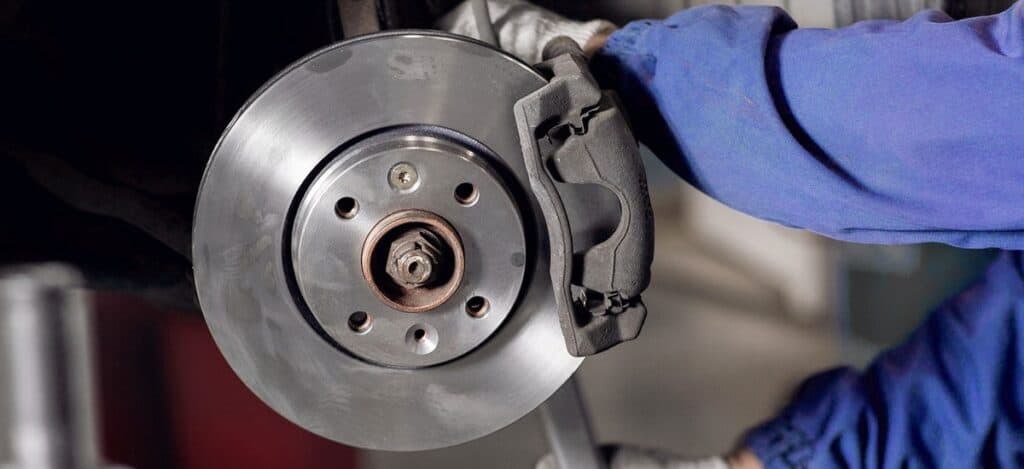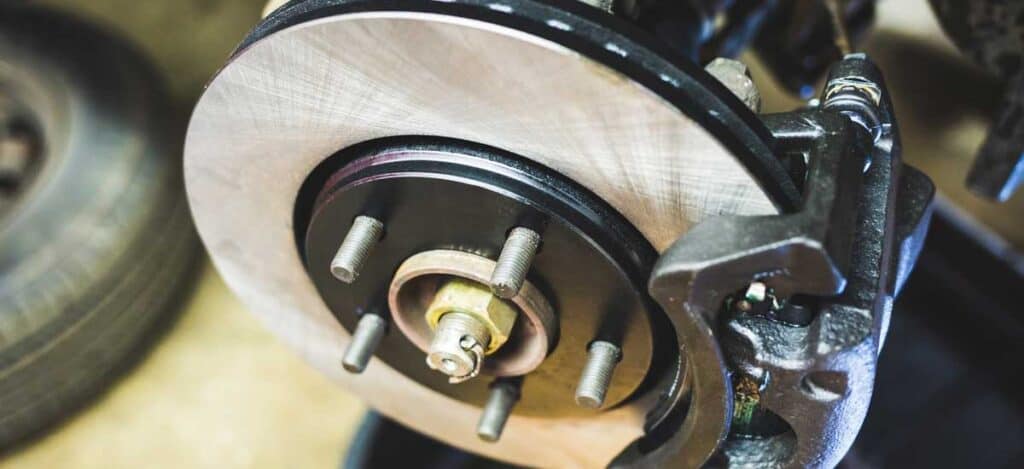Your car has two brake rotors at the front and rear wheels. Functional brake rotors ensure successful conversion of kinetic energy into heat. When you apply the brakes, the brake pads press against the rotors. This frictional process reduces wheel spin and ultimately brings your car to a halt. If the rotors are damaged or warped, they won’t be able to carry out their function, resulting in poor brake performance. Consider replacing your rotors if you notice one or more of these warning signs.

1. Car shakes when I apply the brake
You should hear little to no noise when your car is functioning as it should. However, if the brake rotors are bad, you might notice your car shaking or vibrating when you apply the brakes. Brake system problems compromise safety and should be given utmost priority. Make sure to visit a car repair shop if you notice or other signs of brake system problems.
2. Strong Brake Vibration
If your brake vibrates or pulsates any time you press on the pedal, there’s a good chance your rotors are worn and need to be replaced. Warped brake rotors could also cause a pulsating reaction from the brake pedal. Serious vibrations could extend to the chassis or steering wheel.
3. Visible Grooves On Rotors
Ridges are another common sign of worn out rotors. Rotors will normally wear over time, so it’s important to keep track of them before they become unusable. You can measure the groove thickness using a micrometer. While some grooved rotors can be fixed, others may be extensively worn they need to be replaced.
4. It Takes Longer To Slow Down Car
This is a tell-tale sign of a compromised braking system. Your car should ideally respond when the brakes are applied. However, there are many reasons this is not always the case, including a damaged brake rotor. Severely worn rotors will not respond when you apply the brakes. This can be a very serious driving risk in an emergency or high-speed driving. If you experience longer stopping distances or suspect your rotors are worn, an expert technician will let you know what component is faulty and the associated repair cost.

5. Rotors appear bluish
Brake rotors will turn blue following extended exposure to heat. Discolored rotors could eventually brake or crack. This will in turn enhance uneven brake pad wear. And the ripple effect goes all the way to your brake shoes and calipers.
6. Test drive your car
Test-driving your car can also help you detect brake rotor problems. Clock 30 mph speed and then press on the brake pedal. If your car or brake pedal responds with pulsating or vibrating reactions, the brake rotors might be damaged. If everything works fine at 30mph, go up to 60pmh and see if any unusual vibrations or pulsations are produced, which would indicate damaged rotors or calipers.
Note: Avoid using new brake pads on warped rotors Your ability to slow down depends on the pressing contact of the brake pad and rotors. Because brake pads are usually replaced more often, you risk sticking new hardware, in this case, brake pads, to existing damaged or worn rotors, and this will cause more damage than good. First, there will be poor brake pad-rotor contact due to deep grooves on the latter, and this will negatively affect your stopping power. The new brake pads will also wear fast and will need to be replaced earlier than due. Ensure to have an expert mechanic inspect braking components for proper advice when going for a brake repair service.
